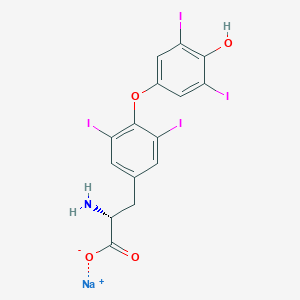A breakthrough was made in the study of cross-generational genetic adaptability of mitochondrial stress
-
Last Update: 2021-03-15
-
Source: Internet
-
Author: User
Search more information of high quality chemicals, good prices and reliable suppliers, visit
www.echemi.com
Liu Ying
Liu Ying of Peking University told China Science Daily that this is the first international study to prove the existence of mitochondrial stress adaptive transgene genetic phenomena in animals, and also to deepen the understanding of cross-generational genetic regulation mechanisms. This research provides a new way of thinking for the study of the genetic mechanism of human mitochondrial disease, and there are potential applications in the genetic screening, eugenics, clinical intervention and treatment development of mitochondrial disease.
mitochondrials are cells with important functions in cells. Eighty percent of the energy required by cells is supplied by mitochondrials. At the same time, abnormal mitochondrial function is closely related to the occurrence of major diseases such as Parkinson's disease, Alzheimer's disease and muscle weakness. There are many factors in the environment that can cause mitochondrial abnormalities, such as toxins secreted by microorganisms, pesticides, and misused antibiotics, which can cause damage to mitochondrials, collectively known as mitochondrial stress.
the adaptability of cells to mitochondrial stress in the environment is of great significance to the adaptation of cells to the environment and the survival of biological individuals. After the organism perceives mitochondrial stress in the environment, it can produce a series of in-cell reactions to antagonate mitochondrial stress in the environment, and help himself to better adapt to the environment, maintain the survival of the individual and the continuation of the population.
However, do progeny organisms have the ability to pass on the adaptiveness that has been obtained to their children, so that they are born with the adaptability to mitochondrial stress and thus better adapt to the environment?
According to Liu Ying, the extensive contact between the line-shaped animals, which are widely present in nature, and the microorganisms that can cause mitochondrial stress are the most appropriate animal models for this study. Liu Ying's team found that after being coerced by mitochondrials, their offs generation nematodes were more resistant to mitochondrial stress, thus better surviving in a mitochondrial stress environment. Moreover, this adaptive mitochondrial stress can still be maintained in child generations until the 4th generation. This also validates the hypothesis of Liu Ying's team that mitochondries do have cross-generational genetic phenomena that are adaptable to mitochondrial stress.
to further reveal the regulatory mechanisms behind this phenomenon, Liu Ying's team screened for single-gene mutants. If a mutation in a gene causes the mitochondrial stress adaptive cross-generational genetic ideotype to disappear, the gene is involved in the regulation of adaptive cross-generational inheritance. Using this classical genetic approach, Liu Ying's team found that cross-generational genetics of nematode mitochondrial stress tolerance were regulated by histoprotein H3K4me3 modification and DNA adenosine N6-methylation modification. These two modifications can be transmitted from the progeny nematode genome to the subgener nematode genome as carriers of genetic information, enhancing the expression of mitochondrial stress adaptation-related genes, thus making the subgener nematodes more resistant to mitochondrial stress.
DNA adenosine N6-methylation modification as a newly discovered form of DNA methylation modification, there are few reports involved in animal physiological function regulation and its molecular mechanism, this study also provides DNA adenosine N6-methylation regulation cross-generational genetic molecular mechanism, promotes DNA adenosine N6-methylation modification to participate in the study of animal complex physiological function regulation and its molecular mechanism. (Source: Science Network Cui Xueqin)
This article is an English version of an article which is originally in the Chinese language on echemi.com and is provided for information purposes only.
This website makes no representation or warranty of any kind, either expressed or implied, as to the accuracy, completeness ownership or reliability of
the article or any translations thereof. If you have any concerns or complaints relating to the article, please send an email, providing a detailed
description of the concern or complaint, to
service@echemi.com. A staff member will contact you within 5 working days. Once verified, infringing content
will be removed immediately.







